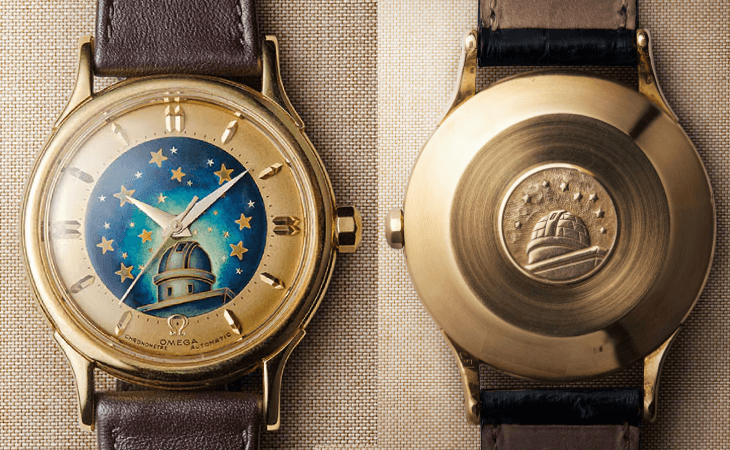Beating the Swiss at their own game. In 1973, the Swiss introduced a new benchmark for watch testing - the Contrôle Officiel Suisse des Chronomètres (COSC). This rigorous test awarded the coveted title of "Chronometer" to watches capable of maintaining an accuracy of -4/+6 seconds per day, over 15 days, in five positions and varying temperatures. Naturally, you might wonder: did Seiko dare to submit their watches for this prestigious certification?
No.
But Seiko wasn’t scared… it was angry.
Some of you might have realised that 1973 sounds very late for the Swiss to start officially testing movements, and you’d be right. Before COSC, the gold standard was Observatory Chronometer certification, established in 1766. You might even recognise some of their more famous graduates, like the Omega Constellation, whose “subtle” nod to the Observatory may be hard to spot:

I won’t bore you with the 200 years of Observatory history, but in order to explain why Seiko shunned the COSC standards in 1973, we need to focus on the death of the Observatory Chronometer standard in the late 1960s.
Prior to the 1964 Olympics, Seiko had almost no international presence, but thanks to their glorious horological display at the Tokyo Games, Seiko gained the confidence to venture out of Japan. And in 1968, Seiko arrived at the Geneva Observatory trials and Neuchâtel Observatory trials with suitcases full of the 45 Series movements ready for certification. From my mildly conceited tone you can probably tell things went well.
Geneva’s Observatory ran the timekeeping competition that year, and Seiko’s 45 Calibre took the seven top spots for mechanical accuracy. Whereas Neuchâtel’s Observatory was only offering Chronometer Certification, and of the 103 individual 45 Calibres submitted by Seiko, 73 exceeded the Chronometer requirements. This was, as far as I can tell, the largest number of movements to have ever received individual chronometer certification in a single year.
Unlike Swiss competitors who often submitted "representative" movements - custom-tuned for competition and not practical examples of production watches - Seiko decided to certify each of their movements individually. These Chronometer certified movements would go on to be placed inside the first 73 examples of the 4520-8020 Seiko Astronomical Observatory Chronometer. If you manage to find one of these solid gold watches today, it will set you back at least $45,000, but I’ve seen them go for as much as $90,000:

But Seiko’s success didn’t stop with mechanical movements. They also brought three quartz calibres, which swept the first, second, and third positions. With no category distinctions between quartz and mechanical movements, Seiko dominated the top 10 outright.
Now, imagine you’re the Geneva Observatory. On your home soil, inside an observatory that’s been certifying Swiss Chronometer-grade movements for over 200 years, an upstart Japanese watchmaker has just cleanly swept the top 10 of a competition that’s never been won by a foreign watchmaker. How do you react?
You cancel the entire Observation Chromometer standard, of course. The standard would re-emerge in 1973 as COSC, but with a notable caveat:
Only Swiss-made movements are eligible for testing.
That feels oddly targeted, doesn’t it? There are various loopholes a non-Swiss watchmaker can exploit to have their movement classed as “Swiss-made”, but Seiko wasn’t interested in cowing to this obvious affront, and would instead create their own testing environment.
So before the COSC standard could even be established in 1973, Japan had bettered it with their own Grand Seiko Standard in 1971. The more rigorous test would go on to produce the VFA and 6156 Special, showcased today, which were certified to a daily accuracy of +/- 2 seconds per day and +/- 3 seconds per day, respectively, compared to the COSC standard of -4/+6 seconds per day.
Even now, the COSC standard is, in my opinion, below the Grand Seiko equivalent. “Representative” movements are still accepted by COSC, whereas Grand Seiko individually tests every single movement. The 9S on your wrist isn’t just part of a theoretical certification - it has been tested and verified itself.

